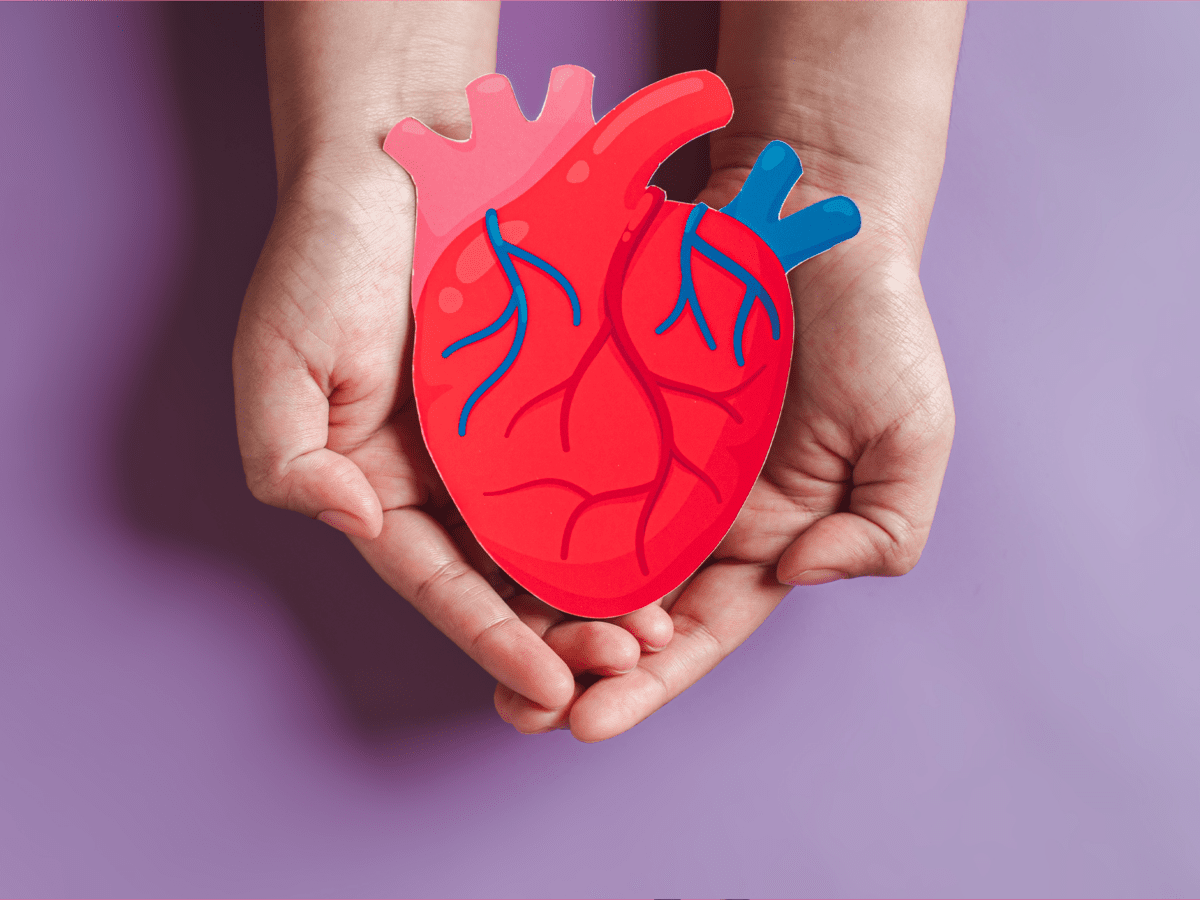Dated January 19, 2023
What’s on your mind? Happiness, sadness, tension or excitement make themselves felt through the heart. Without the heart we would not be able to move, think or feel. We will explain to you how the “heart” of the body works and what diseases you need to look out for.
What works day and night without interruption and continuously does hard work? The heart. It is considered the motor of the circulatory system and keeps all processes in the body moving. It beats more than 100,000 times a day, pumping up to 7,000 liters of blood through the body – as much as 40 full bath tubs. A real power pack. In order to guarantee the functions of the heart, the structure of the organ plays an important role.
structure and anatomy
atrium and ventricle
The heart is a hollow muscle and is located approximately in the middle of the chest. There it lies well protected behind the sternum. It is anatomically divided into two halves: the left and right halves of the heart, with the cardiac septum acting as the partition. Each half of the heart is divided into a larger main chamber (right and left ventricle) and a smaller atrium (right and left atrium). The division allows only low-oxygen blood to flow in the right half of the heart and only high-oxygen blood to flow in the left half.
heart valves
To ensure the correct flow of blood through the heart, there are four heart valves that work like valves. Depending on their position, these are divided into flaps and pocket flaps. The leaflet valves lie between the respective atria and their main chambers and separate them from each other. The semilunar valves lie between the respective main chamber and its outgoing vessels, the pulmonary artery (pulmonary artery) and the main artery (aorta).
coronary vessels
The coronary arteries, also known as the coronary arteries, lie on the outside of the heart in the form of a network. There they supply the entire organ with oxygen and nutrients. If these are narrowed, the risk of a heart attack increases.
Blood circulation and function of the heart
The heart supplies the body with oxygen by pumping oxygen-rich blood into the circulatory system. First, deoxygenated blood travels through the veins into the right atrium and then into the right ventricle. From there, the blood is pumped via the pulmonary artery into the lungs, where it is enriched with oxygen. The oxygen-rich blood returns to the heart via the left atrium into the left main chamber and from there is routed to the entire body via the aorta.
systole and diastole
The pumping of the heart muscle takes place via rhythmic contraction, in which the muscle alternately contracts (contraction phase = systole) and relaxes (rest phase = diastole). During rest, the chambers of the heart fill with blood. In the contraction phase, blood is pumped into the pulmonary circulation and into the body.
The pulse
The pulse normally corresponds to the heart rate and indicates how often the heart beats within a minute. A healthy heart beats an average of 60 to 80 times per minute. If the body is stressed or the person is excited, the heart rate increases, more blood is pumped and an increased pulse is the result.
heart diseases
Coronary heart disease
Here the coronary arteries are constricted by hardening of the arteries and can no longer adequately supply the heart.
Both increasing age and various factors such as diabetes, high cholesterol levels, smoking and obesity can increase the risk of coronary heart disease.
Depending on the cause, therapy can include platelet aggregation inhibitors, beta blockers or lipid-lowering drugs (if cholesterol levels are too high).
Angina pectoris
Angina pectoris is one of the main symptoms of coronary heart disease and is manifested by pain in the chest and chest tightness. The cause is narrowed coronary arteries, which means that the heart is not supplied with enough oxygen. A distinction is made between stable and unstable angina pectoris.
At a stable angina pectoris The symptoms only occur during physical exertion, such as climbing stairs or other physical activities. They disappear as soon as the body rests or medicines are used.
Stable angina pectoris can be treated with nitro sprays, among other things, which are used in acute cases and can dilate the blood vessels. Long-term therapy with beta blockers and blood thinners can also be used.
In the unstable angina pectoris symptoms can also occur during periods of rest, which can get worse from time to time and increase the need for medication. This condition is considered an indicator of a possible heart attack and should be monitored medically as soon as possible.
heart failure
Heart failure is a reduced cardiac output. The heart pumps less blood, which can be a result of high blood pressure or coronary artery disease.
Heart failure can be treated with beta blockers, ACE inhibitors and sartans, for example. The aim of the therapy is to relieve the weakened heart.
cardiac arrhythmias
In cardiac arrhythmias, the heart beats irregularly and heart palpitations or tachycardia can occur. If the heart beats too fast, it is called tachycardia, if it beats too slowly, it is called bradycardia. The causes for this are manifold. High blood pressure or coronary heart disease can lead to arrhythmias, but alcohol or stress can also be causes. Cardiac arrhythmias do not always have to be dangerous, but this can only be clarified by a doctor. This is a well-known type of cardiac arrhythmia atrial fibrillation.
Beta blockers and antiarrhythmics can also be used as therapy here. Catheter ablation can help with severe arrhythmias.



